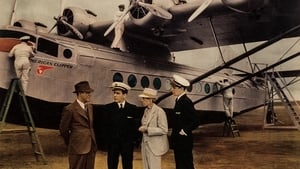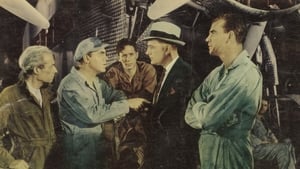Contact: info@alwanfilm.com
Video Sources 0 Views
- Watch trailer
- China Clipper


China Clipper 1936 Colorized
Synopsis
Table of Contents
ToggleReview: China Clipper 1936 Colorized – A High-Flying Adventure Across the Skies

Introduction
“China Clipper” (1936) takes audiences on a thrilling journey through the clouds, capturing the spirit of adventure and exploration that defined the era of aviation. In this review, we’ll explore the significance of this classic film and its enduring appeal to audiences of all ages.
Check The Full Colorized Movies List
Check Our Colorized Movies Trailer Channel
Understanding China Clipper 1936 Colorized: Director, Cast, and Genre
Directed by the visionary Ray Enright, “China Clipper” (1936) showcases his talent for crafting high-octane adventures that keep viewers on the edge of their seats. The film features a stellar cast, including Pat O’Brien and Humphrey Bogart, whose performances elevate the story to new heights. Blending elements of drama, romance, and suspense, “China Clipper” (1936) transports viewers to a world where anything is possible and the sky is the limit.
Exploring the World of China Clipper 1936 Colorized: Plot and Characters
At its core, “China Clipper” (1936) follows the daring exploits of a group of pilots who risk life and limb to deliver mail across the treacherous Pacific Ocean. As they navigate stormy skies and face formidable challenges, they forge bonds of camaraderie and courage that transcend the boundaries of time and space. Along the way, they encounter a cast of colorful characters who test their mettle and push them to the limits of their endurance.
The Art of Film Colorization
Film colorization serves as a transformative tool that enhances the visual experience of classic movies, breathing new life into timeless stories and captivating audiences with vibrant hues. By digitally adding color to black and white films, colorization allows viewers to immerse themselves in the rich tapestry of cinematic worlds, exploring every nuance and detail with fresh eyes and renewed appreciation.
Early Colored Films: A Brief History
The history of colored films traces its roots back to the early days of cinema, with filmmakers experimenting with various techniques to add color to their creations. From hand-tinted frames to early Technicolor processes, the evolution of colored film has been marked by innovation and ingenuity, paving the way for the development of modern colorization techniques that continue to captivate audiences to this day.
China Clipper 1936 and Its Early Colored Version
The decision to release “China Clipper” (1936) in a colorized format was met with both excitement and trepidation. While some welcomed the opportunity to experience the film in vibrant color, others expressed concerns about the potential impact on its visual aesthetic. Nevertheless, the early colored version of “China Clipper” (1936) offers viewers a fresh perspective on the high-flying adventure, enhancing its immersive qualities and captivating audiences with its luminous beauty.
The Debate Over Film Colorization
The debate over film colorization continues to divide audiences and critics alike, with proponents praising its ability to breathe new life into classic movies and introduce them to a new generation of viewers, while detractors argue that it compromises the artistic integrity of the original work and diminishes its historical significance. As the debate rages on, filmmakers and audiences alike are left to ponder the merits and drawbacks of colorization in the ever-evolving landscape of cinema.
Examining China Clipper 1936 as an Early Colored Film
As with any colorized classic, the impact of colorization on “China Clipper” (1936) is a matter of personal interpretation. Some may argue that it enhances the film’s visual appeal and immerses viewers in its world, while others may feel that it detracts from the stark beauty of the original black and white version. Regardless of one’s stance on the issue, there’s no denying the enduring power of “China Clipper” (1936) as a timeless adventure that continues to captivate audiences around the world.
Influence and Legacy: China Clipper 1936 Colorized’s Impact on Cinema
“China Clipper” (1936) has left an indelible mark on the world of cinema, inspiring countless filmmakers and captivating audiences with its thrilling aerial sequences and heart-pounding drama. From its unforgettable performances to its sweeping cinematography, the film continues to resonate with viewers of all ages, reaffirming its status as a beloved classic of the adventure genre.
Director’s Cinematic Legacy: Beyond China Clipper 1936 Colorized
Ray Enright’s influence extends far beyond “China Clipper” (1936), with a diverse body of work that continues to captivate audiences around the globe. From “Dames” to “Alibi Ike,” Enright’s films are celebrated for their wit, charm, and craftsmanship, solidifying his legacy as one of the preeminent directors of Hollywood’s Golden Age. Through his groundbreaking work, Enright has left an indelible imprint on the world of cinema, inspiring generations of filmmakers to follow in his footsteps.
Themes Explored in China Clipper 1936 Colorized
“China Clipper” (1936) explores a myriad of themes, from the triumph of the human spirit to the thrill of discovery and exploration. Through its richly drawn characters and exhilarating storytelling, the film invites viewers to embark on a journey of self-discovery and adventure, reminding us of the boundless possibilities that await those who dare to dream and reach for the stars.
Reception and Controversy Surrounding China Clipper 1936 Colorized
Upon its release, “China Clipper” (1936) received widespread critical acclaim, with many praising its thrilling aerial sequences, compelling performances, and breathtaking cinematography. However, the decision to release the film in a colorized format sparked debate among purists, reigniting the age-old discussion surrounding film preservation and artistic integrity. Despite the controversy, “China Clipper” (1936) remains a beloved classic that continues to captivate audiences with its timeless tale of adventure and exploration.
Where to Watch China Clipper 1936 Colorized Online
For those eager to experience the high-flying adventure of “China Clipper” (1936), the film is readily available on popular streaming platforms such as Netflix, Amazon Prime, and Hulu. Whether you choose to watch it in its original black and white format or the early colored version, “China Clipper” (1936) promises to transport you to a world of excitement and wonder, where the sky is the limit and anything is possible.
FAQs About China Clipper 1936 Colorized
Q: Is “China Clipper” (1936) based on a true story? A: While “China Clipper” (1936) draws inspiration from real-life events and the pioneering spirit of early aviators, its characters and plot are fictionalized for dramatic effect.
Q: Who are the main actors in “China Clipper” (1936)? A: “China Clipper” (1936) features a talented ensemble cast, including Pat O’Brien and Humphrey Bogart, whose performances bring the exhilarating world of aviation to life on screen.
Q: What awards did “China Clipper” (1936) win? A: While “China Clipper” (1936) did not win any major awards, it received critical acclaim for its thrilling aerial sequences and gripping storytelling.
Q: Why was “China Clipper” (1936) released in a colorized format? A: The decision to release “China Clipper” (1936) in color was made to introduce the film to a new generation of viewers and enhance its visual appeal for modern audiences. While the choice to colorize the film sparked debate among purists, it ultimately allowed “China Clipper” (1936) to reach a wider audience and ensure its continued relevance in the annals of cinematic history.
Conclusion
As we soar through the clouds with the daring pilots of “China Clipper” (1936), let us celebrate the enduring legacy of this timeless adventure and the boundless spirit of exploration that it embodies. Whether viewed in its original black and white format or the early colored version, “China Clipper” (1936) continues to captivate audiences with its thrilling action, memorable characters, and breathtaking cinematography. So, buckle up and prepare for takeoff as we embark on a high-flying adventure that will leave you breathless and inspired.












